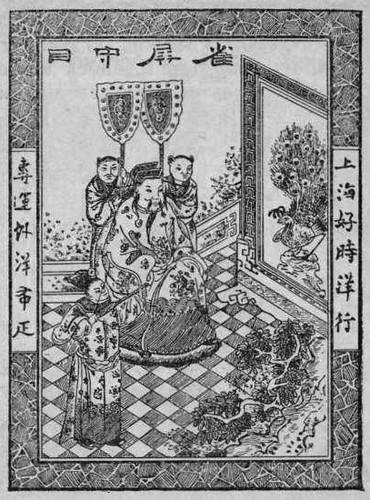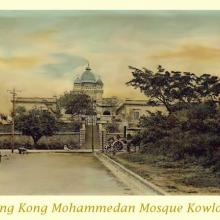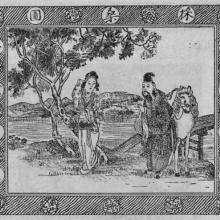Charles Gesner van der Voort (1916-1991) had started his career in Rotterdam, at Holland-China Trading Company (HCHC). In 1938, he went to Shanghai for the firm. The Japanese interned him, and most other Dutch nationals, from 1943-45. In camp, he met his wife Nancy and they married after the war. After a leave in The Netherlands, they returned to the Orient, where Charles continued to work for HCHC in Hong Kong.
Royal Dutch Library has a great site for retrieving printed matter, especially newspapers. Several registrations of trade marks were found in Nederlandse staatscourant (Dutch State Gazette), accompanied by a drawing of the trade mark (Delpher.nl).
Hotz s'Jacob was one of the organisations which preceded Holland-China Trading Company, which was founded in 1903. One of the main products it traded was cotton clothing, produced in the East of the Netherlands, Twente.
The caption reads:
"14835
Naam van den inzender:
De firma Hotz s'Jacob & Co., te Rotterdam.
Soort der waren:
Katoenen manufacturen.
Dagteekening waaronder de inschrijving heeft plaats gehad:
16 augustus 1900.
Het merk vertoont in eene met goud en blauw geornamenteerde rechthoekige lijst, welke aan beide zijkanten is voorzien van eenen wit uitgespaarden rechthoek, waarin Chineesche karakters, de voorhof van een Chineesch huis. In het midden zit een Chineesche man in ruim gewaad, door eenen gordel om het midden opgehouden en met de handen op de knieen. Achter hem staan twee Chineezen ieder een schild ophoudende. Vóór hem staat een kleinere Chinees met den gespannen boog mikkende op eenen pauw, die rechts in eene omlijsting zichtbaar is. De vloer is geplaveid met blauwe en witte ruitvormige tegels; rechts op den vloer slingert zich een boomtak. Op den achtergrond wordt het geheel afgesloten door een hekwerk, waarachter boomgewas zichtbaar is. In de lucht staan eenige Chineesche letters."
Courtesy Koninklijke Bibliotheek (Royal Dutch Library), Nederlandsche staatscourant, 1 September 1900
This trade mark was also registered in Hong Kong. The 19 January 1901 Hongkong Government Gazette reads:
"The trade marks ordinance, 1898
Application for Registration of Trade Marks.
Notice is hereby given that Messrs. Hotz S'Jacob and Company have, on the 26th day of September 1900, applied for the registration in Hongkong, in the Register of Trade Marks the following Trade Marks:
...
6. The figures of Chinese Ancient Warriors on a field practising bow and arrow, with an Umpire watching them.
...
in the name of Hotz S'Jacob and Company, who claim the be the sole proprietors thereof. The Trade Marks are intended to be used by the applicants in the respect of the Cotton Piece Goods of all kinds in Class 24.
Facsimiles of the Trade Marks can be seen at the Office of the Colonial Secretary of Hong Kong and also at the Office of the undersigned.
Dated the 12th day of November, 1900.
Wilkinson & Grist,
Solicitors for the Applicants,
70, Queens Road, Hongkong."
This trademark was transferred to Holland-China Trading Company in 1904.
The Hongkong Government Gazette, 12 August 1904:
"Government notification. - No. 567.
Notice is hereby given that Mrssrs. Hotz s'Jacob & Company have by assignment transferred their nineteen (19) trade marks (15 registered on 20th March, 1901, in respect of Cotton piece goods of all kinds in class 24; 1 registered on 29th November, 1901, in respect of Condensed milk, cocoa and chocolate in Class 42; and 3 registered on 29th November, 1901, in respect of Sewing cotton on spools or reels in Class 23) to the Holland-China Handels Compagnie (Holland-China Trading Company) of Rotterdam in the Kingdom of Holland.
By command,
F.H. May,
Colonial Secretary.
Colonial Secretary's Office, Hongkong, 11th August, 1904."
Courtesy Hong Kong University Library, <a href="https://old.gwulo.com/%3Ca%20href%3D"https://lib.hku.hk/database/">https://lib.hku.hk/database/" rel="noreferrer nofollow">lib.hku.hk/database/</a>




